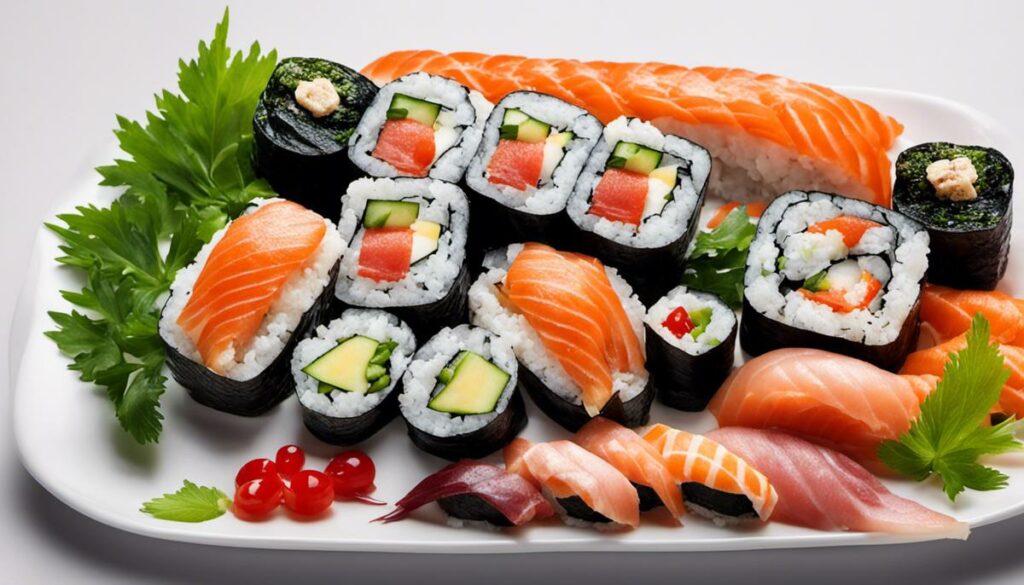Sushi, that bundle of flavor and nutrients from faraway Japan, has firmly established itself in the Western world. With an impressive variety of variations and combinations of ingredients, it allows for a healthy, balanced diet while offering a delicious taste experience. In the following, we will enter the world of sushi and look at its health advantages and disadvantages, as well as healthy alternatives and perfect combinations for a balanced diet.
The versatility of sushi
Sushi plays a central role in Japanese cuisine and has quickly taken its place in the world’s mobile diet. With its fresh ingredients and visually appealing design, sushi is an exciting and tasty option for food lovers worldwide. But could it be a suitable addition to a diet?
When we talk about dieting, it’s often about choosing healthy food. Sushi could be just that! It is rich in essential fatty acids, proteins and vitamins. The ingredients used in sushi, such as fish, seaweed, and vegetables, are all of excellent quality and provide an abundance of essential nutrients.
Maki, nigiri or sashimi – the variety of sushi is impressive. However, with so many options, calories can add up quickly. Some sushi rolls can contain more than 500 calories, which would be on the high side if you follow a calorie-restricted diet.
Oily fish like salmon or tuna, mayo-based sauces, and tempura-coated rolls can skyrocket calorie counts. So, if you pay attention to a healthy diet, it is important to choose the right roles. Perhaps it makes sense to focus on sashimi, characterized by its simplicity and slimmed-down ingredients.
Soy sauce use can also become a problem. Many people tend to drown their sushi in soy sauce, which drives up the sodium content. Although soy sauce adds intense flavor, it could raise your blood pressure and cause water retention. It pays to be prudent here.
The key to incorporating sushi into a diet is balance and moderation. As with anything, too much of a good thing can quickly turn bad. So, if you have a desire for something exotic, sushi is the perfect delicacy. Just remember to choose and enjoy wisely!
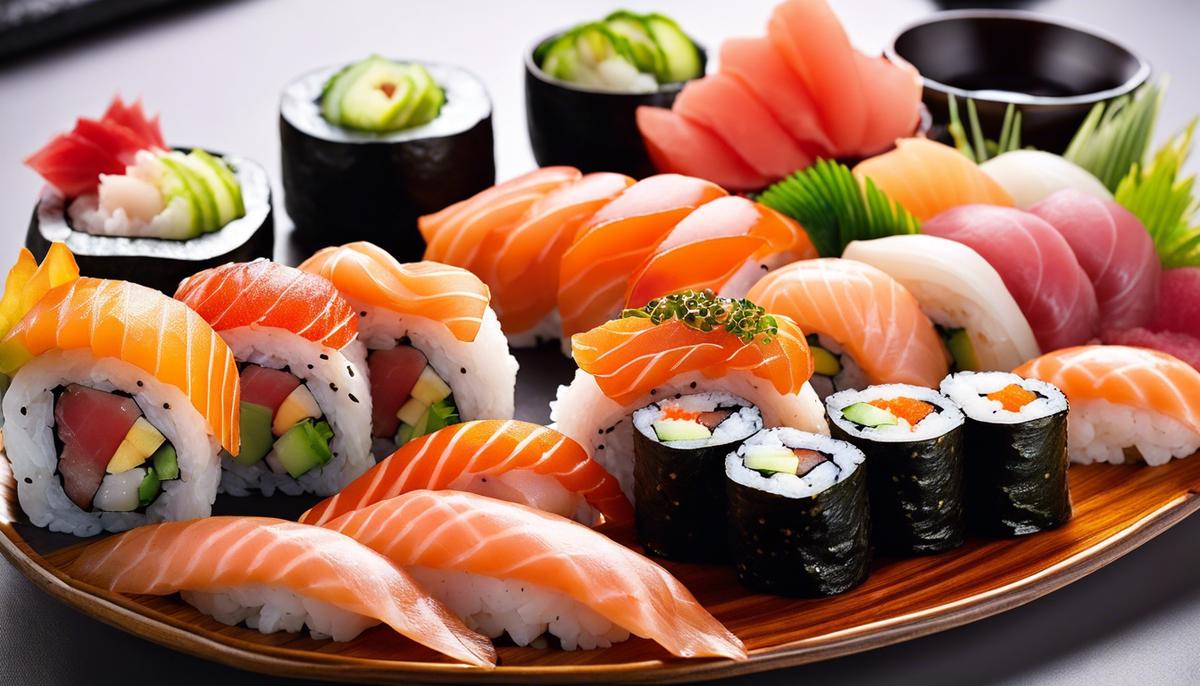
Sushi: Healthy or not?
Food choices play an essential role when it comes to a healthy diet. Sushi is a visually appealing and healthy option that is great to incorporate into any diet. But how healthy is sushi really? Let’s discover the secret that is hidden behind this Japanese national dish.
Although sushi is often touted as a healthy option, not all roles are created equal. Choosing the right ingredients is crucial to keep nutrient levels high and calories low. For example, careful selection of vegetable fillings over lavish creams and sauces can make the difference between a healthy meal and a high-calorie one.
Try to choose sushi with lots of vegetables and low-fat, high-protein fish. Some of the fatty fish commonly used in sushi rolls — such as salmon and tuna — are good sources of omega-3 fatty acids, which are known for their health benefits.
However, it’s important to note that despite sushi’s health benefits, some ingredients — such as white rice and sugared rice vinegar — should be consumed in moderation. You can also ask for sushi rolls made with brown rice, which contains more fiber and is considered more filling.
For those on a calorie-restricted diet, sashimi could be a good option. Sashimi consists only of thinly sliced, raw fish, making it a low-calorie and high-protein option.
In addition, it is worth noting the high sodium content present in soy sauce and pickled ginger, which are often served with sushi. Excessive sodium consumption can lead to high blood pressure. It is therefore recommended to use the soy sauce sparingly or ask for low-sodium alternatives.
In conclusion, sushi can be a healthy addition to any diet if you are careful in your choice of rolls and side dishes. It’s all about finding the right balance and appreciating the artistic aesthetic of this wonderful Japanese dish. May you enjoy the sushi – down to the last bite!
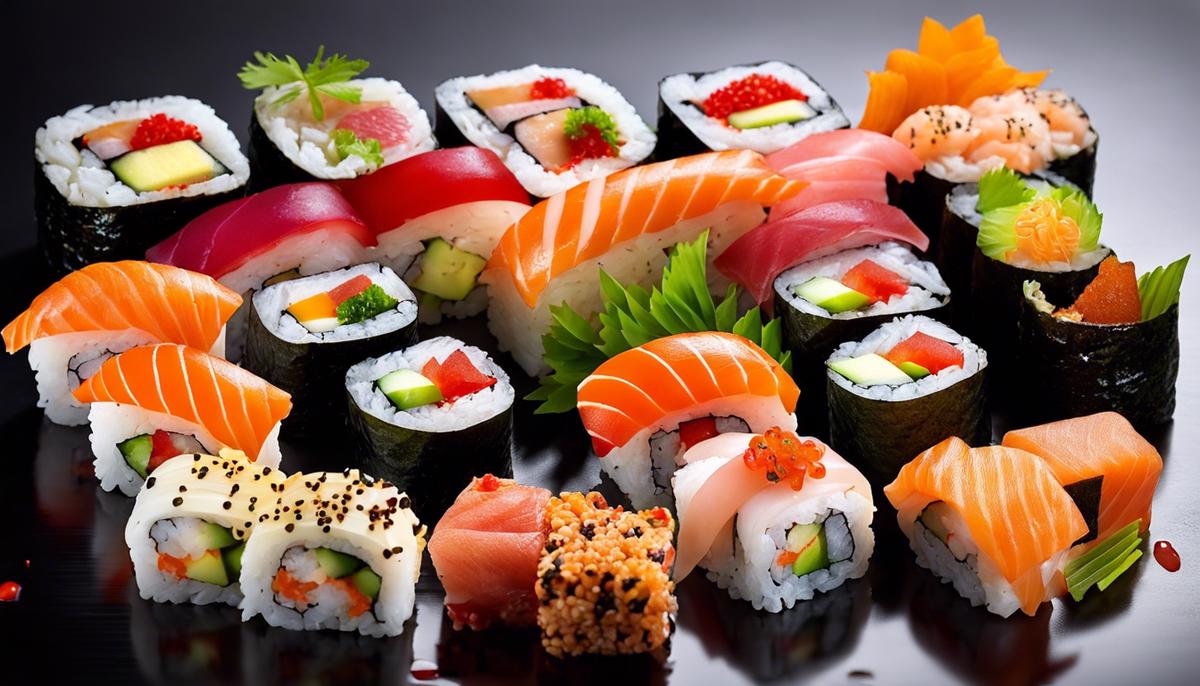
Sushi Alternatives for the Diet-Conscious
Much more than just a fancy Instagram photo, sushi has undergone an impressive transformation from traditional Japanese street food to a worldwide sensation. The mix of freshness and creativity has contributed to its massive popularity. Regardless of its multifaceted appearance, a nourishing, low-carbohydrate and tasty sushi meal plays a central role in the diet.
Dietary choices are a fundamental part of a healthy diet. Choosing the right ingredients is crucial, and sushi gives dieters countless options. Stack the sushi rolls with a variety of healthy ingredients, such as cucumbers, radishes, avocado and tobiko. Fish is also a great high-protein, low-calorie ingredient as long as it’s not tempered with large amounts of mayo or gravy.
However, not everything about sushi is low in calories. The difference between a healthy meal and a high-calorie meal can lurk in some sushi rolls. Some of the most dangerous culprits are tempura and cream cheese. White rice and sugared rice vinegar can also add a significant calorie count in the long run.
Brown rice is an excellent alternative to white rice on a diet. It contains more fiber and has a lower glycemic index, which can make you feel fuller for longer and prevents blood sugar levels from rising and falling rapidly.
Another trend among sushi lovers who keep an eye on their figure is sashimi. It’s a high-protein, low-calorie alternative that omits white rice and sugared rice vinegar altogether.
It is also important to pay attention to the high sodium content in soy sauce and pickled ginger . The mere thought of soy sauce may make us drool, but the sodium load can be reflected in our health. Therefore, be sparing with the soy sauce or ask for low-sodium alternatives.
Finally, we emphasize the right choice of sushi rolls and side dishes. It is absolutely possible to eat healthy and fun, and balance and moderation are key to this integration task. And of course, don’t forget to enjoy the experience! After all, food should be fun.
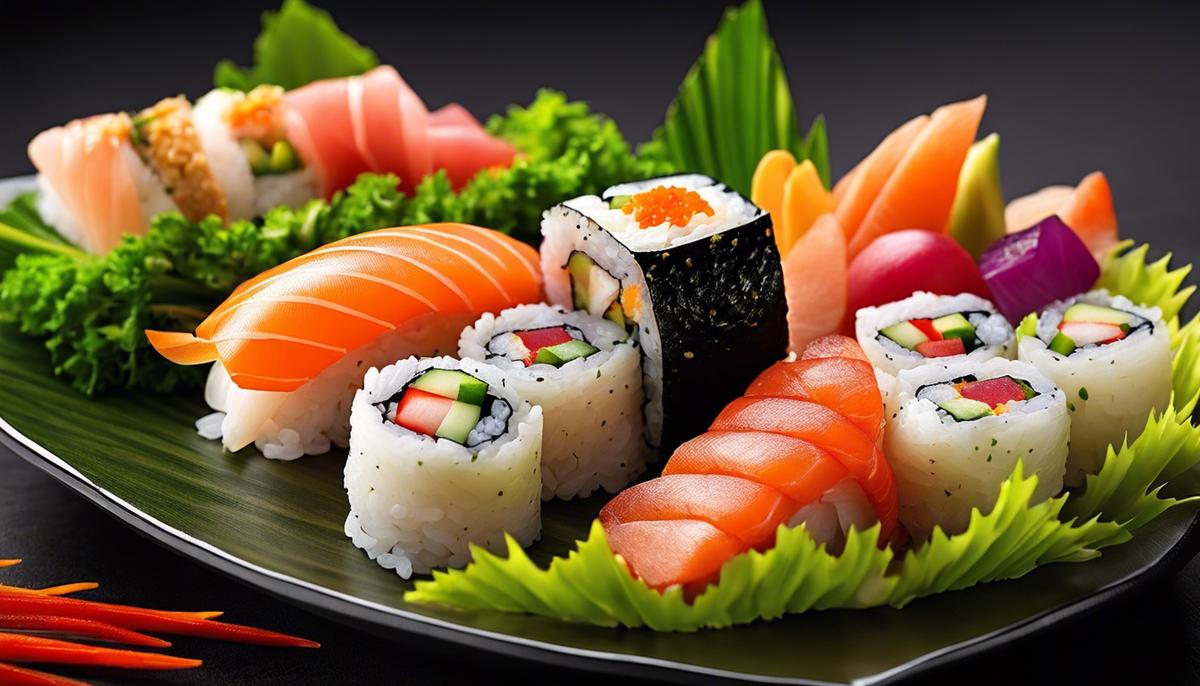
Perfect Sushi Combinations for a Diet
– Appreciating the aesthetics of sushi and how the look adds to the overall experience
– The way sushi should be enjoyed – slow and deliberate to appreciate all the flavors and textures
– The role of omega-3 fatty acids in sushi and how they can contribute to heart health
– The importance of seaweed in sushi, as a source of nutrients and vitamins
– The benefits of using vegetables in sushi, for extra fiber and nutrients
– How to use white rice in sushi preparation to reduce the glycemic index
– The need to pay attention to the sugar content in sweetened rice vinegar
– The use of avocado in sushi, for healthy fats and creaminess
– Choosing fresh fish over smoked or fried fish to save calories and avoid consuming unhealthy fats
– The preference for lean types of fish such as tuna, as they contain less fat and are rich in protein
– Paying attention to portions when enjoying sushi to avoid excessive calorie intake
– The fact that variety is the secret to a healthy sushi diet – mixed with maki, nigiri, and sashimi.
– The joy of new combinations and variations to keep the sushi experience exciting and satisfying.
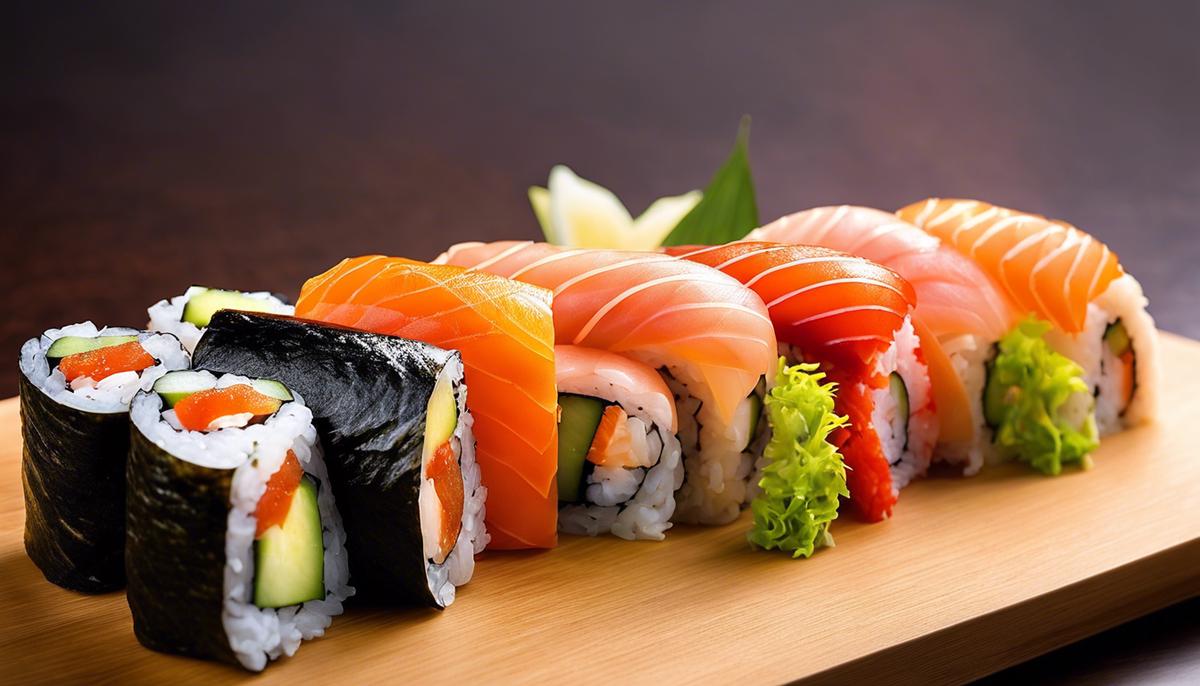
Sushi, in its many variations and combinations, has more to offer than just a treat for the palate. It contributes to a healthy and balanced diet by providing a wide range of nutrients. Maki or nigiri, with the use of brown rice or fresh vegetables, there are an abundance of healthy options to suit your dietary needs. So, grab your chopsticks and don’t miss out on this nutrient-dense, delicious surprise pack!


